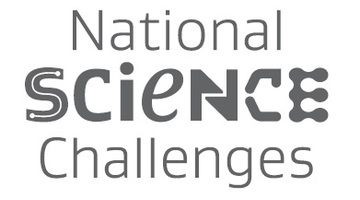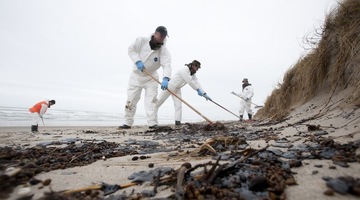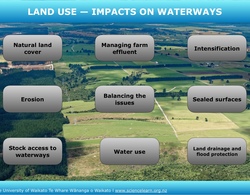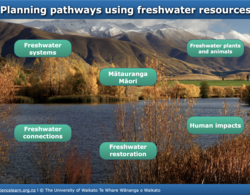

The world’s largest oil fields are contained in limestones. By contrast, New Zealand’s oil deposits are mostly sandstone based. However, limestone associated with the Tikorangi Formation in the ...
READ MORE

As New Zealanders looking to the future, we are faced with many opportunities – and challenges. These include improving the health of all our people, advancing our economic growth, protecting our ...
READ MORE

Riparian zones are the areas beside streams. These areas are sometimes reconstructed or improved to provide habitat for fish and other aquatic life and to stabilise banks against erosion. This ...
READ MORE

In this activity, students consider short-term and long-term responses to an environmental disaster such as the Rena. By the end of this activity, students should be able to: describe what might ...
READ MORE

In this activity, students research three aspects of biodiversity loss – direct species loss, habitat loss and pests and weeds. Rights: Lara Bieleski Coastal biodiversity An example of the ...
READ MORE

In this activity, students research the effect of common pollutants on our waterways and hold a mock trial to determine the worst pollutant in the country. By the end of this activity, students ...
READ MORE

Be part of a worldwide movement and use Global Earth Challenge to submit or classify photos to help our planet’s environment and human health. Global Earth Challenge is a citizen science campaign ...
READ MORE

This citizen science project wants your assistance to extract information from various climate scientific graphics to help combat misinformation and support scientific communication. Using this ...
READ MORE

Long ago, according to the legend of Māui, the Sun was the focus of attention. People wanted more daylight and warmth to get their jobs done. Māui schemed to harness the Sun. Rights: Tim Tripp ...
READ MORE

In the primary classroom, even though teachers and students generally spend the day together, it cannot be assumed that students will experience their learning as coherent, connected or ...
READ MORE

Freshwater is defined as inland water – springs, streams, rivers, lakes and wetlands. It includes water that is stored in glaciers and under the ground within soil and in aquifers. Freshwater is ...
READ MORE
This animated video demonstrates the formation of hydrocarbons over millions of years in the depths of the Earth. Oil and gas forms in sedimentary ocean basins. Dead plankton (organic plant and ...
READ MORE
Adam Vonk explains that, to find hydrocarbons, scientists first need to identify a source rock that has been buried deep enough so that the temperature and pressure drive off or separate the ...
READ MORE
Rotorua is world famous for its geothermal features. For generations, local Māori used the hot pools with little impact on the natural system. As Rotorua’s population grew, unsustainable amounts ...
READ MORE

Discover some of the issues involving land use and water quality. Click on the labels for more information. Select here to view the full transcript and copyright information.
READ MORE

This interactive groups Hub resources into key science and mātauranga Māori concepts. Select here to view further information, the full transcript (with PDF download option) and copyright ...
READ MORE

Use this interactive graphic organiser to explore your personal views and values relating to water. Place each statement card where you feel it belongs. There are no right or wrong answers.
READ MORE